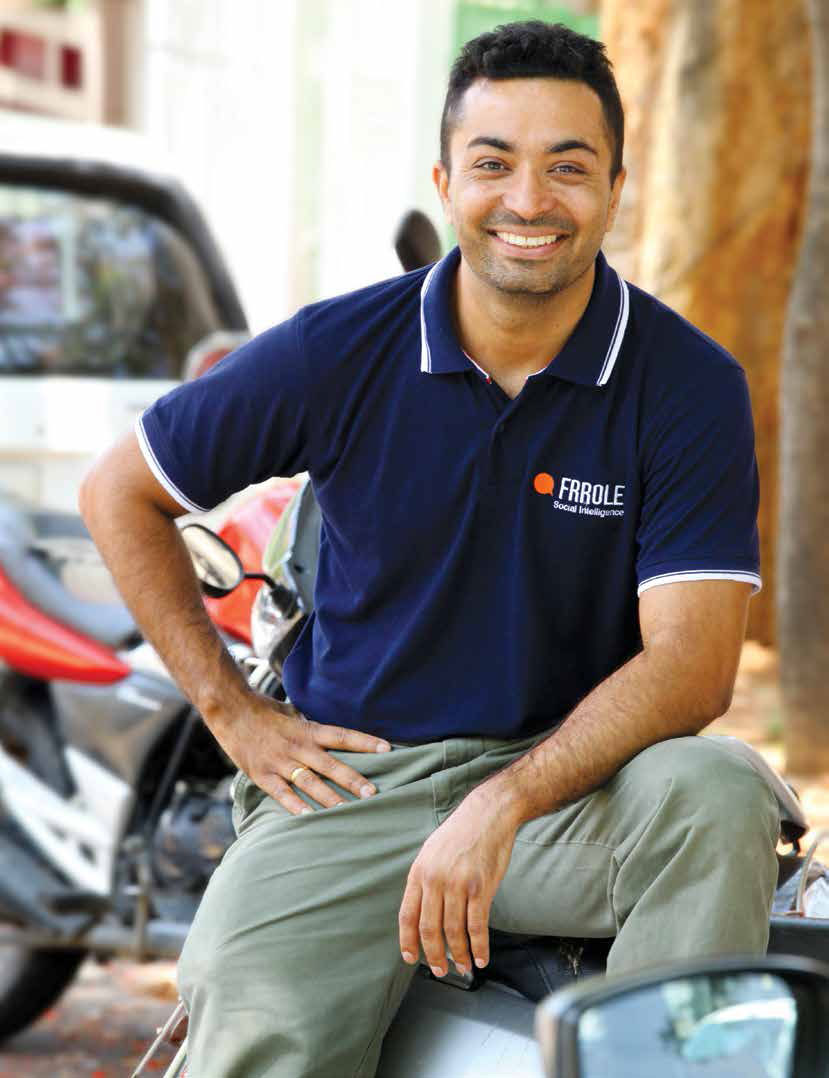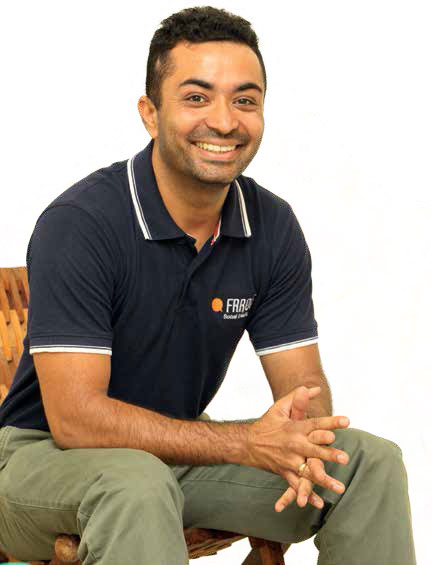
To be seen and heard on social media (SM) is quite de rigueur for most today. We do not bother to bat an eyelid as we tweet, re-tweet and become part of the vast social media conversations, be it on Facebook or other platforms. But have we ever wondered on the impact of our conversations on companies, their brands or even government policies? Do we ever give a thought when we participate in audience poll or post opinions real-time on media platforms, TV shows or on other perspectives? But someone is definitely listening, and this ‘social listener’ mines our conversations and scientifically dissects our thoughts, likes and dislikes by analysing hundreds of millions of such ‘real -time’ conversations.
Frrole is one such global social intelligence company that helps gain consumer insight from SM conversations. With the help of powerful search engines or tie-ups with SM platforms, these SM listening companies deliver deep social insights that influence and impact businesses and have become an integral aspect of strategy that goes beyond marketing of brands alone. “In fact, governments, marketing agencies, media houses, financial institutions, hedge fund institutions and consulting companies alike are resorting to social intelligence,” explains Amarpreet Kalkat, co-founder at Frrole operating from Bengaluru and the US.
With over 300-400 million Indians accessing the Internet regularly on their phones alone, even the average Indian consumer is quite active on opinion-based conversations. Frrole taps into these conversations to understand what consumers want or think. Frrole has now pioneered a deeper level of interpretation by building semantic context (distinguishing meanings of words, symbols, etc.) on different topics and relating the same with available general and historical data to draw more insights from social data. Next step - mood analysis, anybody?
“Every business wants to know its customers better. Over the last 10-15 years, social media platforms have created the largest and the fastest-growing set of consumer information ever created. The public part of this information set is available for everybody to use. But social intelligence companies like Frrole help their customers mine latent insights in this data. The usage of social intelligence is accelerating sharply with advances in machine learning and Artificial Intelligence (AI) algorithms. While the only major customer three years ago was a B2C (business to commerce) marketer, it is now used by governments, government agencies, financial institutions, hedge funds, consulting companies and so on, to answer vastly complex questions”, says Amarpreet.
What we tweet, re-tweet and banter back and forth on social media may be idle chatter to us, but it is a gold mine of information for companies, even governments, who use it for policy making or brand positioning. There are nuances to every line and conversation, be it likes and dislikes, sentiment or mood, even semantics -- that lend greater depth to the analysis of such data. Corporate Citizen caught up with Amarpreet Kalkat, co-founder of Frrole, a global social intelligence company that helps gain consumer insights from social media conversations

A social data-as-a-service (SaaS) company, Frrole mines deep insights from social conversations and makes them available to its clients via its data feeds and dashboard applications. Marketing teams in any company hanker for consumer insights, and deciphering what a ‘tweet’ means in decision making could be tricky. So Frrole works on its social intelligence engine that analyses real- time data pieces, across semantics, metadata and statistics to offer accurate consumer insights. It analyses demographics, psychometrics, brand preferences, purchase behaviour and content affinity of people based on what they post on social media. Using derived insights of this analysis, it helps measure real-time shifts in audience characteristics, or analyse past buying behaviour to predict future patterns.
It was Amarpreet’s desire to get into intelligent products where he could get a chance to work with social data. The thought was that social data could be hugely valuable in understanding consumers. “We thought that it can be a very significant value prop to mine this data as our starting point…Marketing people have been using social analytics for a while so that made for a good start and beyond that you can apply the knowledge of the user or what you glean (data) in real time and apply this to many uses and cases,” he says. “When I started in 2005 till mid-2013, we deviated to a B2B model, and in January 2014, we officially got started. ‘Start-up’ does not really have to do with the age of the company. It is more to do with your state, your constraints, type of structure and I would frankly call Frrole a startup at this point in time.” Amarpreet tagged the Punjabi word ‘frrole’ which means ‘sudden discovery’, as his name choice for his new startup. “When you are not looking for something specifically that might not exist, but is something useful, is what we are bringing-the ability to crunch social data. But you don’t necessarily know if it exists. But, given our algorithmic intelligence, we are able to find that out and bring that to you. That’s where the term ‘Frrole’ comes from.”
Bangalore-based founder Amarpreet (Product and Business) is supported by co-founders Nishith Sharma (Marketing) and Abhishek Vaid (Technology). Amarpreet dabbled in startups by engaging in multiple products before picking up on Frrole as his prime goal. Equipped with 16 years of experience in building more than 10 products in the technology sector, he has had his stints with Nokia, Trilogy and HP. Abhishek,with his background in research and academia is well versed in Data Mining, Algorithm Design and AI. Nishith Sharma, alumni of IIM Kozhikode is more focused on the marketing aspect, having had stints with Jaguar, Tata Motors and Infosys.
‘We have brought in aspects like mood measurement and personality trait measurement. Traditionally people did not look at classifying social media conversations as by human beings, or Bots (robots). We try to bring in improvement to make it more reallive interpretation of SM data’
According to Amarpreet, over the last two to three years, social data is being applied to a wider variety of scenarios beyond product market movement. “It has seen application for government needs, weather and climate interpretation and even disease control. These areas are fairly new and it’s hard to put a number on the market capture of these sectors, but it is becoming a sizeable market if you go by the amount of attention that is paid to social data in today’s world.”
“From a very specific sense, the social analytics market from a market intelligence point of view is said to be averaging around $1.5 to $2 billon globally. It is growing say at 32-40 percent annually and expected to be around $5 billion by 2020. So, that is just the marketing analytics space alone. ”
“There has been significant value in social data, and the social analytics segment has been there roughly for 10-12 y e a r s anyway,” says Amarpreet. “Competition is surely there and there are a decent number of large enterprise companies that have marketing analytics and social analytics products. Then you have a bunch of well established startups. Most of these are US-based companies or US affiliated ones. There are a handful of Indian companies that exist, but in the entire market, they do not count significantly. In this market, primary players are large US startups or products offered by large US enterprises.
From a technology and algorithmic intelligence perspective, Frrole has been building technology that is clearly differentiated from the traditional way of measuring, and banks on emotional aspects too on SM such as social sentiment. “We have brought in aspects like mood measurement and personality trait measurement. Traditionally, people did not look at classifying social media conversations as by human beings, or Bots (robots). We try to bring in improvement to make it more real-live interpretation of SM data. Location-wise, it has been largely looked at, say, from a country, state or city intelligence, but we have brought in neighbourhood level analysis or hyper local analytic elements to our Social Intelligence (SI). So, we have been making improvement by taking SI from where it was and is, to the next level.”
Expertise in the area of machine learning with Liz Miller’s popular mood analysis framework called ‘Mood Mapping’, deemed unique in the SI space, that provides real-time data on consumer moods, along with sentiment. “This is a significant next step, as mood analysis can tell a brand how a consumer is likely to act on a certain feeling, something that brand marketers care for deeply.” Frrole’s mood analysis technology has been put to real use and adapted by Maxus India that allows them to factor in real-time mood of the people into content and communication strategy.
Amarpreet explains that while the first-generation products were largely called social listening tools, giving either statistical or linguistic answers from social data, the second generation did not make much of an algorithmic improvement on the intelligence side, but it opened up the possibility of using a wave of data-as-a-service product.
“Now it’s the third wave, and the way we see ourselves is amongst companies like Dataminers or Banjo. You have some of the older companies making a good move into this third generation intelligence where you are able to answer pretty hard questions. For instance, there was the US agency DARPA that ran a challenge to identify Bots from real people on social media. We too address those kinds of issues. ”
Now it’s the third wave, and the way we see ourselves is amongst companies like Dataminers or Banjo. You have some of the older companies making a good move into this third generation intelligence where you are able to answer questions
On company growth and turnover, Amarpreet says, “I don’t think those parameters are really great ways of measuring a company’s worth because if you talk of the number of employees, we are a team of ten, but we earn more revenue than a company at this state that we are in. Also, a customer base too is not a great way either to measure a company’s worth. “You might have customers who pay you $50 per year and you could have customers who pay you $50,000 annually. So, revenue is a good way of measuring. We measure our revenue in terms of ARR which is the run rate at this point of time. It is the current month’s revenue taken and multiplied by 12 (months). In that sense we covered half a million ARR around Jan 2016 and are now shooting to a million ARR at this point of time.
Frrole primarily drives its business networks around three key segments—media agencies, the digital sector and brands. They have roped in Zee, CNN IBN, Flipkart, HDFC Bank, United Breweries. They also service agencies such as Mindshare, Saatchi & Saatchi, Grey 9, etc. With a customer base spread across India and South East Asia and across clients such as Facebook, Twitter, Kolkata Knight Riders, the Times Group, Snapdeal, India Today and Ten Sports, the company is looking at technology leadership in the segment. “Technology leadership is very important for us and it is one area that Indian startups haven’t demonstrated great success in. So, large businesses are getting in that area but not as long as they take technology in tow…”
By sangeeth Ghosh Dastidar